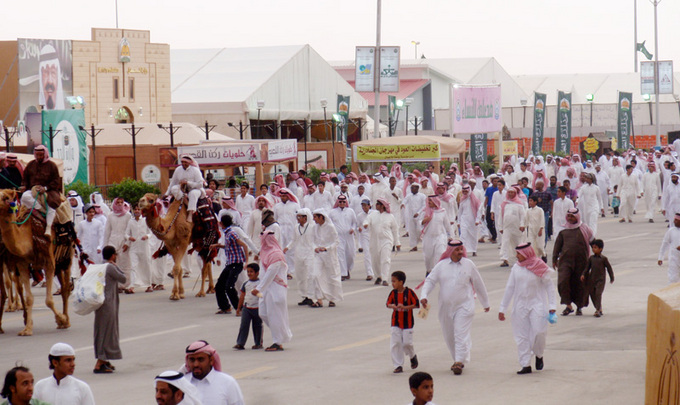Saudi Arabia's Second National Communication - October 2011
Project Overview
The creation of a National Communication offers countries the opportunity to contribute with technically sound studies and information that can be used for designing mitigation and adaptation measures, and project proposals that can and will help increase their resilience to the impacts of climate change. Activities generally include: V&A assessments, Greenhouse Gas Inventory preparation, Mitigation Analysis or Education, and awareness raising activities. The ultimate goal is the integration of climate change considerations into relevant social, economic and environmental policies and actions.
Most of Saudi Arabia has sensitive ecosystem for any level of climate change especially on desertification processes. Assessment of these impacts indicated clearly that most regions have high vulnerability levels for climate change impacts on desertification processes. The climate change impacts as represented by temperature increase would elevate the levels of reference evapo-transpiration by about 1-4.5% at 1oC increase, and by about 6-19.5% at 5 oC increase in most regions. The expected yield losses of different types of field crops (including cereals, vegetables and forage crops) and fruit trees (including date palms) will range between 5 and more than 25%.
Project Details
Most of Saudi Arabia has sensitive ecosystem for any level of climate change especially on desertification processes. Assessment of these impacts indicated clearly that most regions have high vulnerability levels for climate change impacts on desertification processes. The climate change impacts as represented by temperature increase would elevate the levels of reference evapo-transpiration by about 1-4.5% at 1oC increase, and by about 6-19.5% at 5 oC increase in most regions. The expected yield losses of different types of field crops (including cereals, vegetables and forage crops) and fruit trees (including date palms) will range between 5 and more than 25%.
The Kingdom of Saudi Arabia comprises about four-fifths (80%) of the Arabian Peninsula, occupies approximately 2,250,000 square kilometers (868,730 square miles) area and bordered on the west by the Red Sea; on the east by the Arabian Gulf, Bahrain, Qatar and the United Arab Emirates; on the north by Jordan, Iraq and Kuwait; and on the south by the Sultanate of Oman and Yemen.
Saudi Arabia's Red Sea coast on the west stretches to approximately 1760 kilometers, while its eastern coast on the Gulf covers 650 kilometers, including 35 sq. km of mangroves and 1480 sq. km of coral reefs. The country has an arid climate with an average annual rainfall of 70.5 mm. Almost two thirds of the country is arid steppe and mountains with peaks as high as 3,000 meters, and most of the remainder is sand desert.
Saudi Arabia consists of a variety of habitats such as sandy and rocky deserts, mountains, valleys ('wadis'), meadows ('raudhas') salt-pans ('sabkhas'), lava-areas ('harrats'), etc. It includes most types of terrain which can be generally divided into two distinct groups of rocks; the Arabian shield and the Arabian Platform. The population of the Kingdom in 1992 was estimated at 16.9 million with a population density of 7 per square kilometer. Life expectancy at birth in 1991 was 69 for both men and women. Births that year were 37 per 1000 people, and deaths 5 per 1000, with an average annual population growth for 1991-2000 of 3.5%. 78% of the population is concentrated in the urban areas.
Population and Water Consumption
The population increased from 6.9 million in 1972 to 21 million by 2001. As a result, water consumption has increased significantly in the last three decades (Figure 1.1). As shown in this figure, extensive agricultural activities in the 1990s resulted in a high withdrawal of non-renewable water resources. A steady increase in water demand was also observed from 1997 to 2005 (Figure 1.2). The annual water demand in Saudi Arabia was 20,740 million cubic meters (MCM) in 2000 and increased to 22,480 MCM in 2005. This indicates an average yearly increase of 1.7%. Based on this overall increase and trends in sector-wise demands from 2000 to 2005, water demands for 2100 have been estimated as 111,500 MCM.
At the current trend, approximately 5,250 billion cubic meters (BCM) of water will be needed in Saudi Arabia to meet the demands from 2010 to 2100, while the total estimated current reserves (non-renewable and renewable groundwater sources) and future contributions through recharges and surface water sources will be approximately 2,700 BCM. However, estimates of water availability are also associated with a high degree of uncertainty and it is highly unlikely that all of the reserved water from non-renewable and renewable groundwater sources will be extractable.
Source: Saudi Arabia SNC (October 2011)
Key Results and Outputs
- Sustainable development and the integration of climate change concerns into medium- and long-term planning
- Inventories of anthropogenic emissions by sources and removals by sinks of greenhouse gases
- Measures contributing to addressing climate change
- Research and systematic observation
- Climate change impacts, adaptation measures and response strategies
- Education, training and public awareness
Potential Adaptation Measures:
Water Resources
* Increase water supply, e.g. by using groundwater, building reservoirs, improving or stabilizing watershed management, desalination
* Reduce water pollution
* Improve or develop water management
Coastal Zones and Marine Ecosystems
* Develop Integrated Coastal Zone Management
* Develop planning/new investment requirements
Reports and Publications
Assessments and Background Documents
Saudi Arabia's Second National Communication - Official Document - October 2011
Monitoring and Evaluation
In 1992, countries joined an international treaty, the United Nations Framework Convention on Climate Change, to cooperatively consider what they could do to limit average global temperature increases and the resulting climate change, and to cope with whatever impacts were, by then, inevitable.
Parties to the Convention must submit national reports on implementation of the Convention to the Conference of the Parties (COP). The required contents of national communications and the timetable for their submission are different for Annex I and non-Annex I Parties. This is in accordance with the principle of "common but differentiated responsibilities" enshrined in the Convention.
The core elements of the national communications for both Annex I and non-Annex I Parties are information on emissions and removals of greenhouse gases (GHGs) and details of the activities a Party has undertaken to implement the Convention. National communications usually contain information on national circumstances, vulnerability assessment, financial resources and transfer of technology, and education, training and public awareness.
Since 1994, governments have invested significant time and resources in the preparation, collection and validation of data on GHG emissions, and the COP has made determined efforts to improve the quality and consistency of the data, which are ensured by established guidelines for reporting. Non-Annex I Parties receive financial and technical assistance in preparing their national communications, facilitated by the UNFCCC secretariat.




